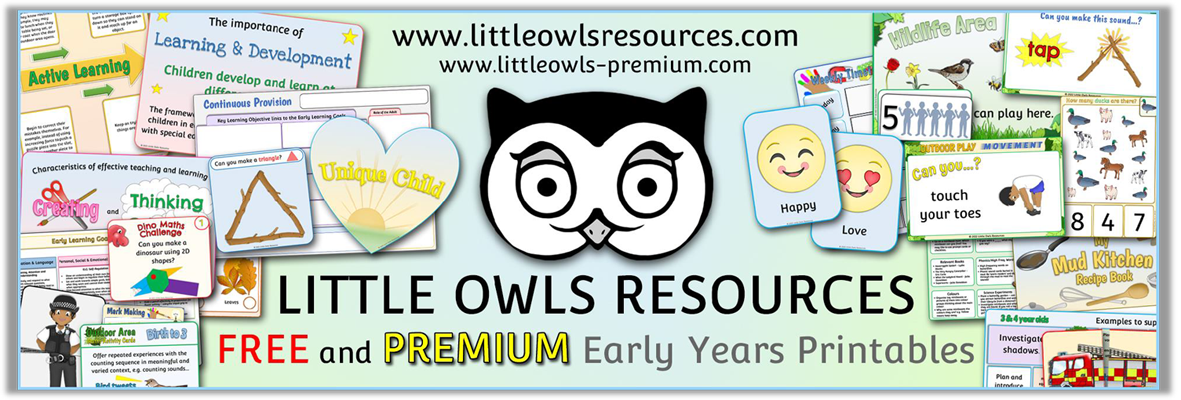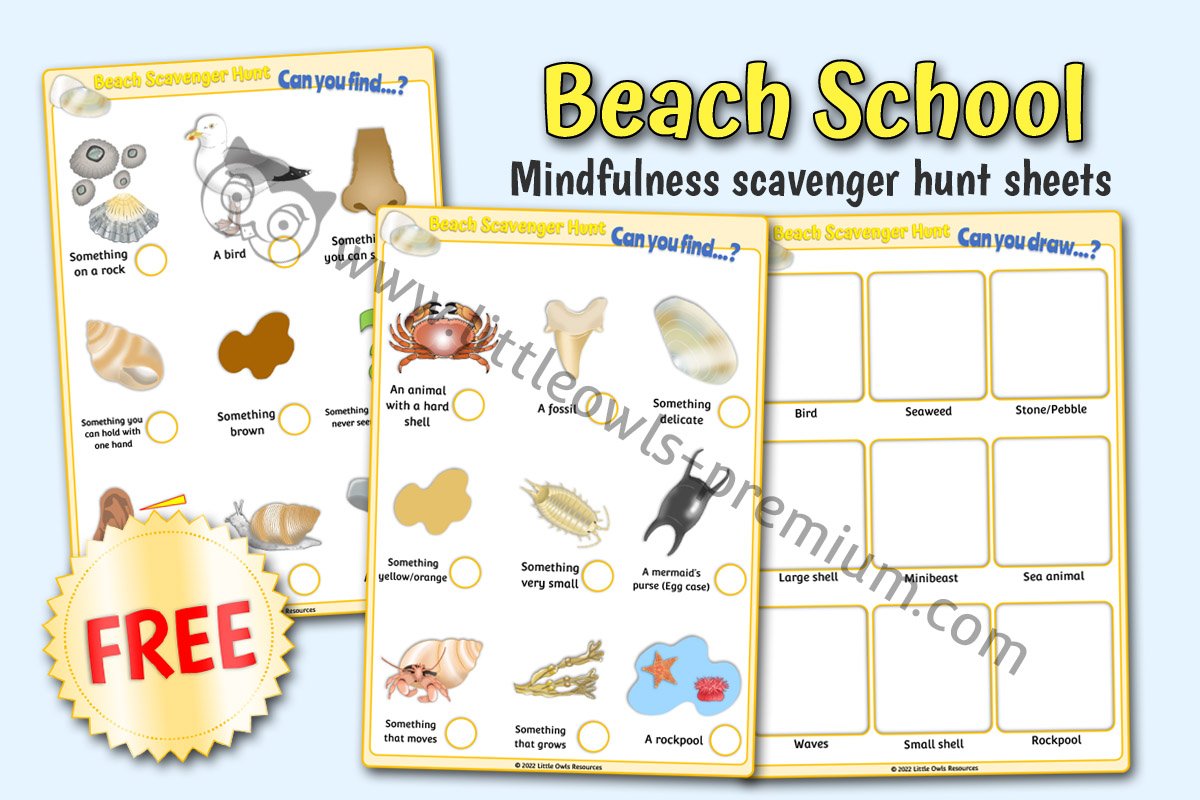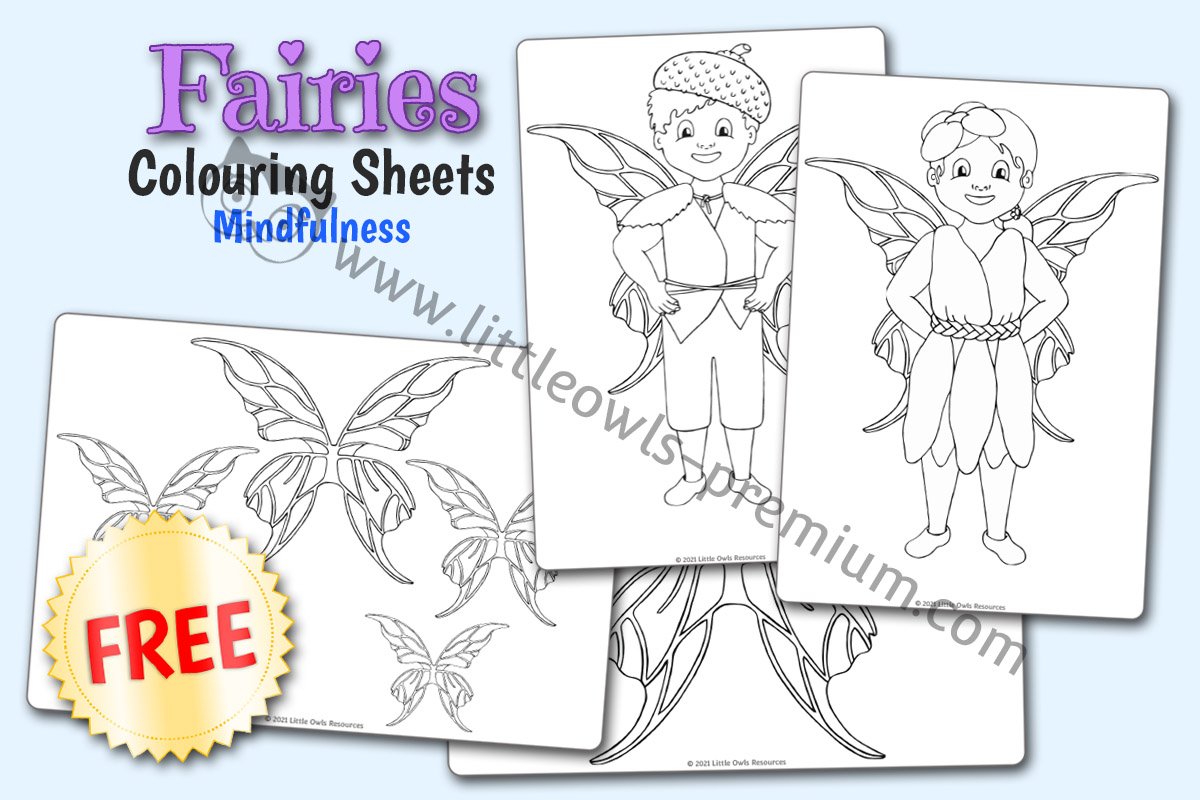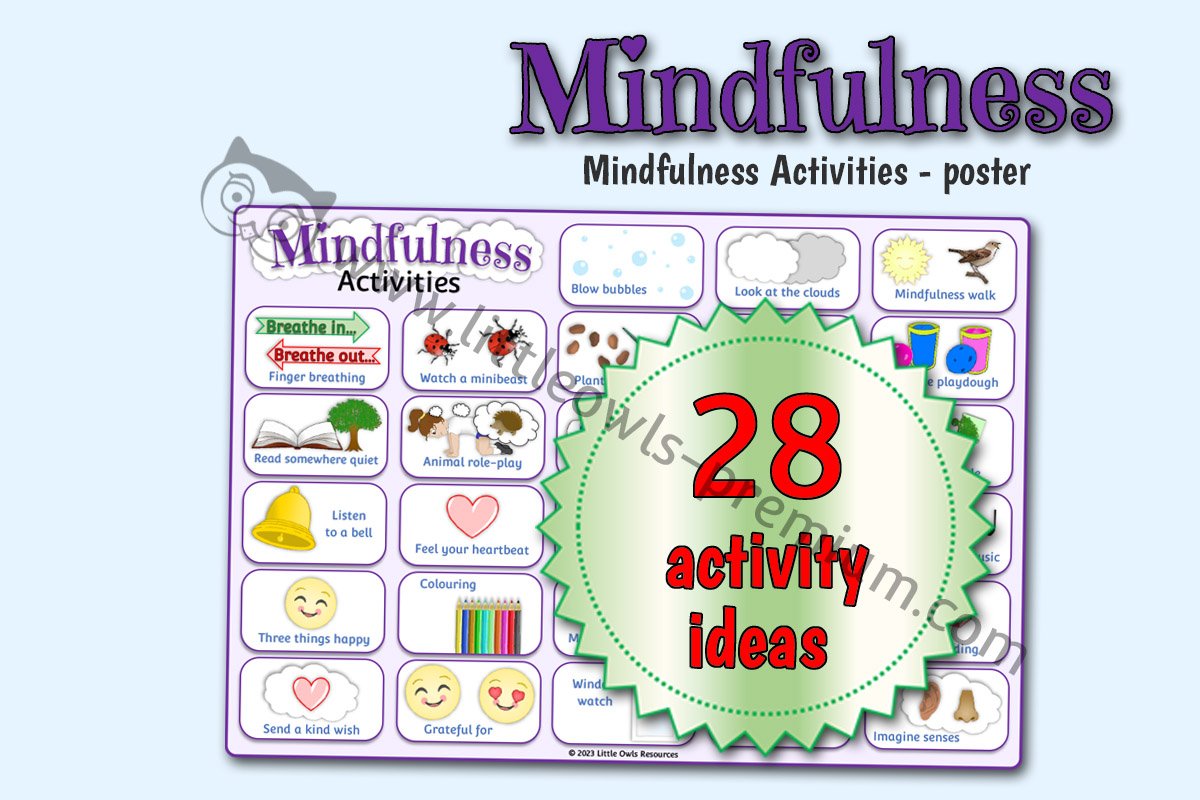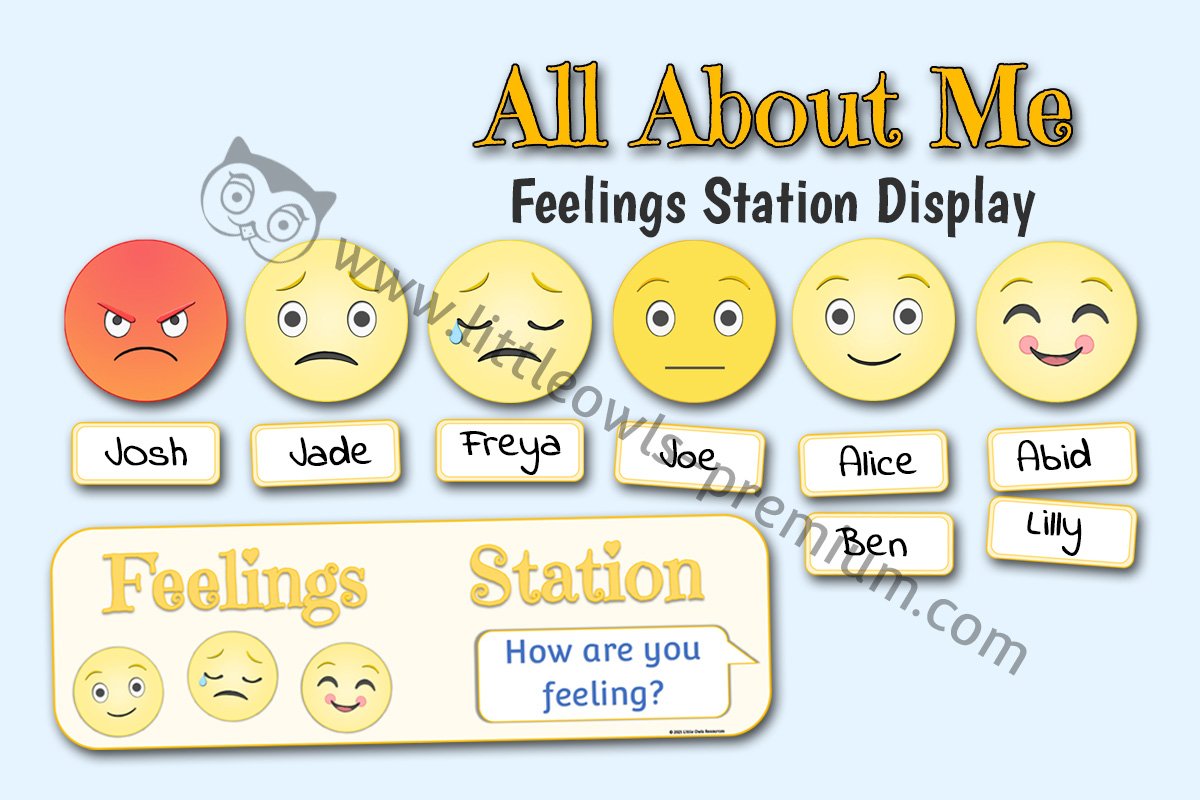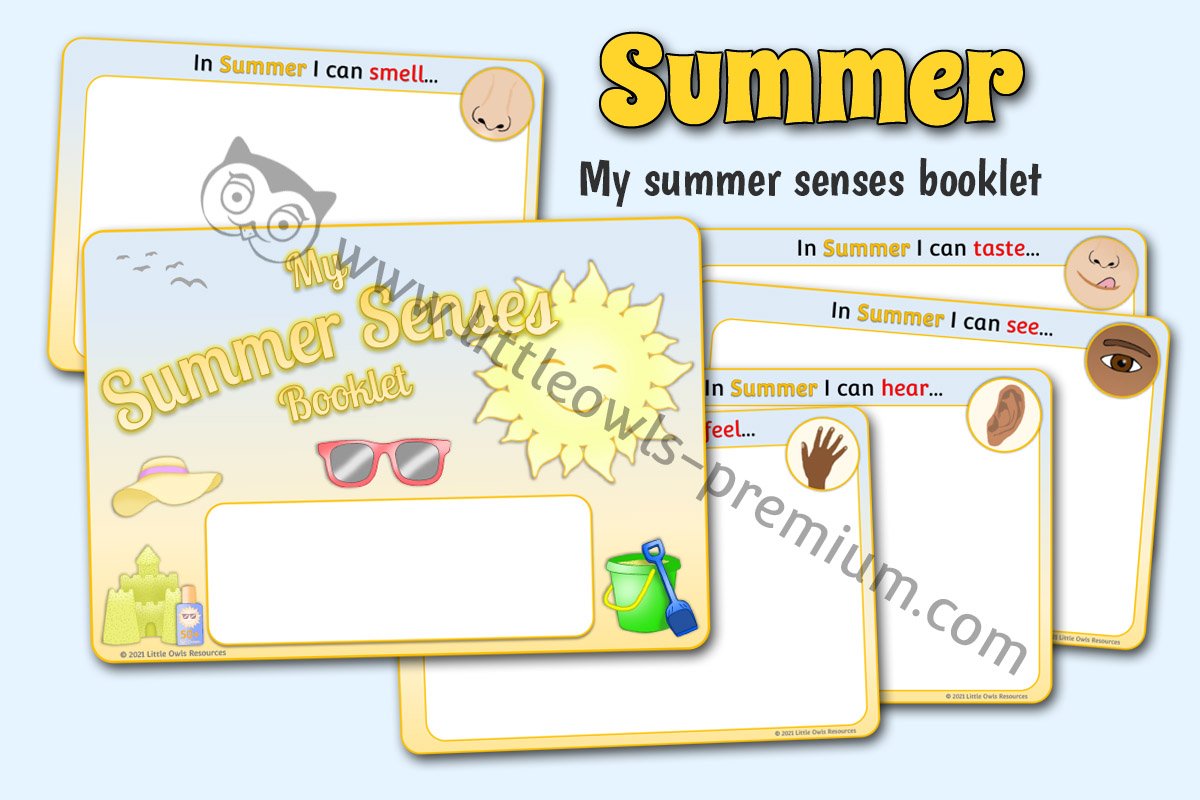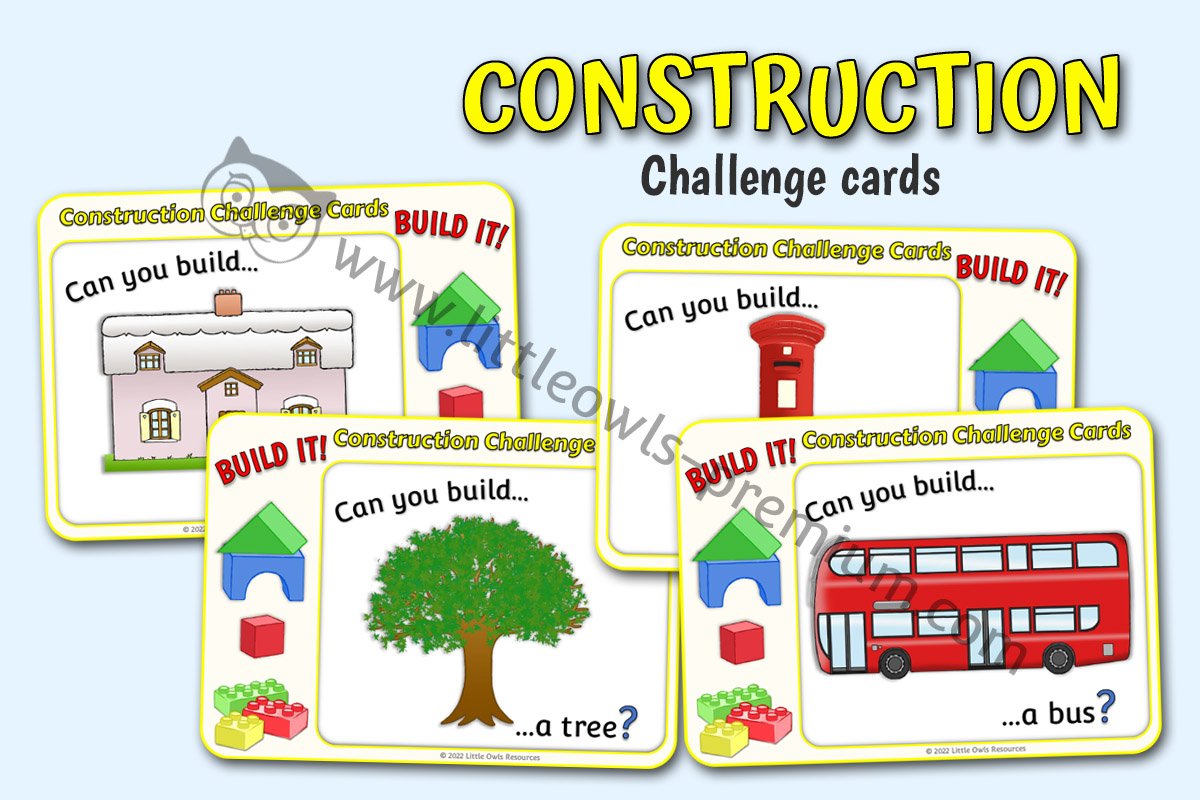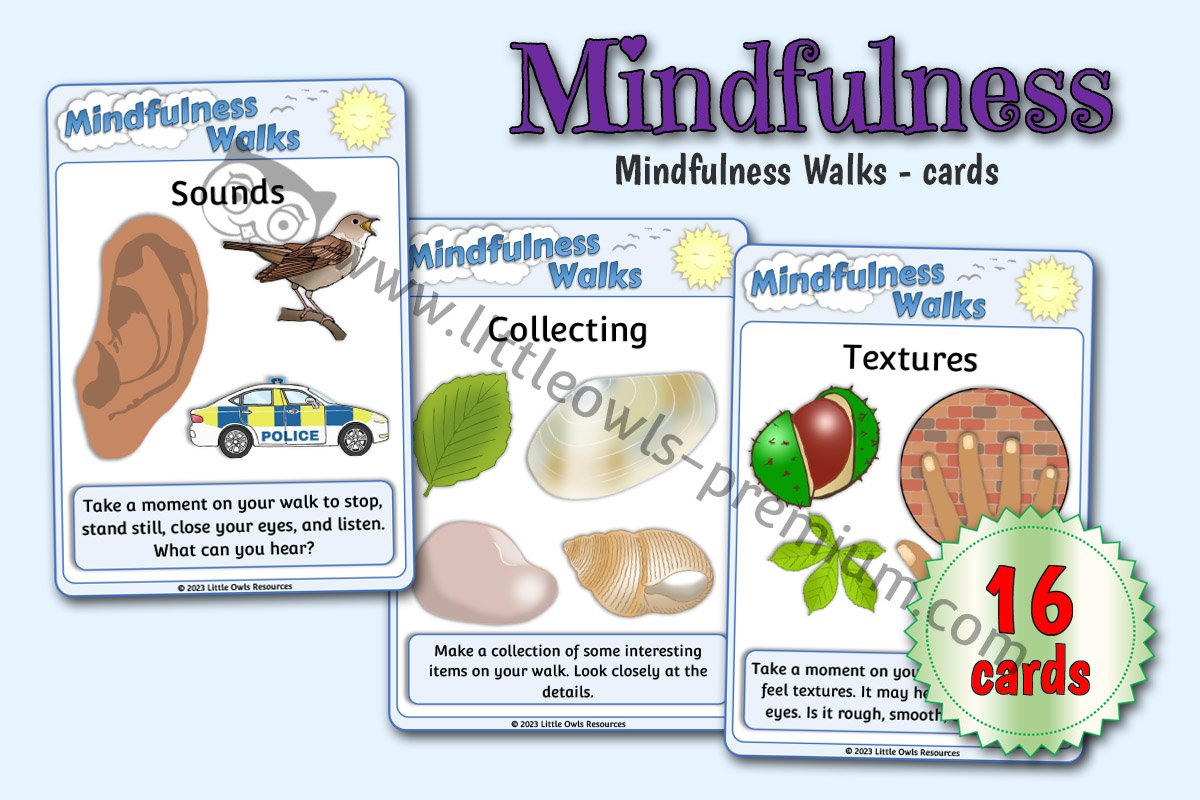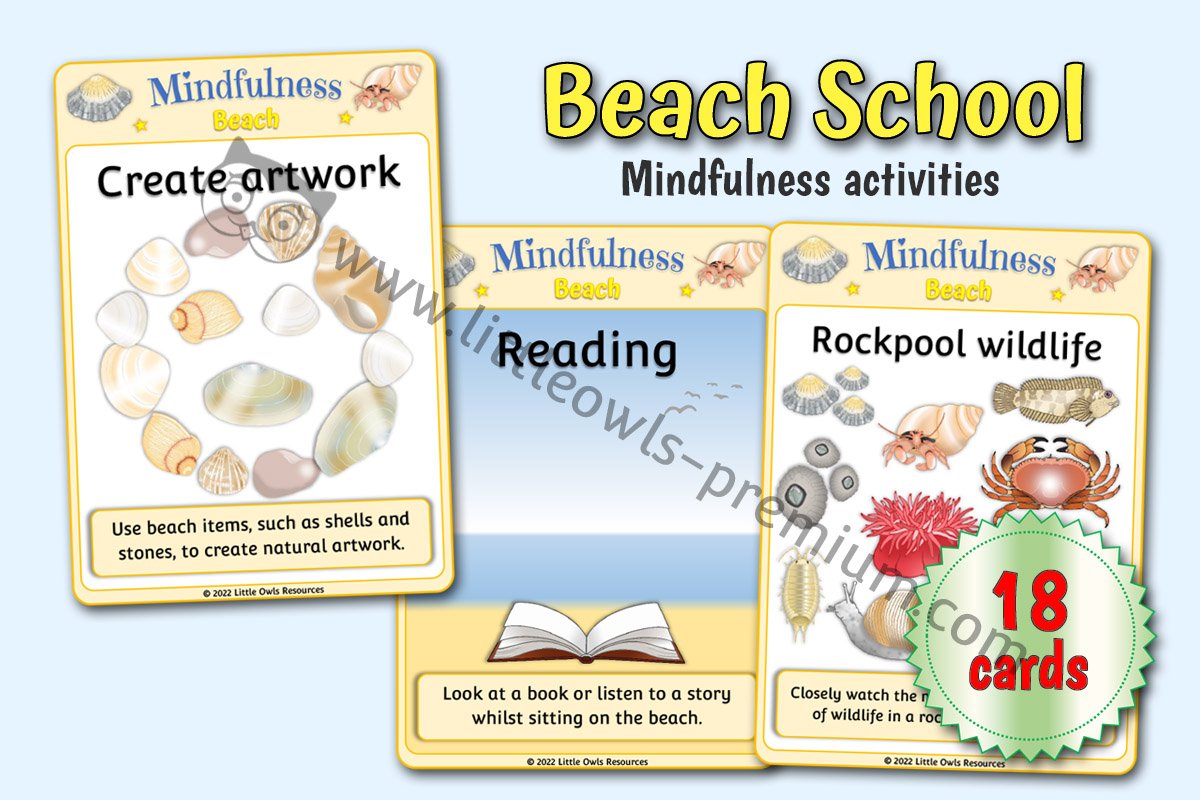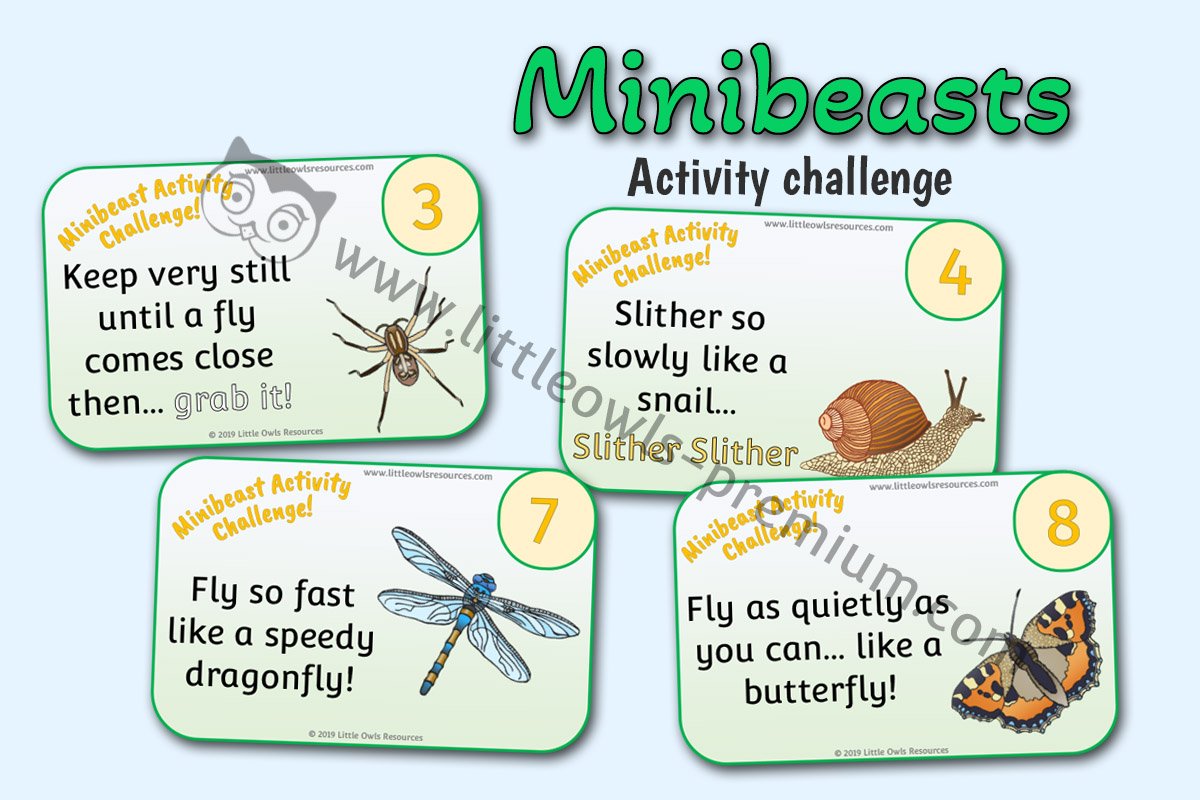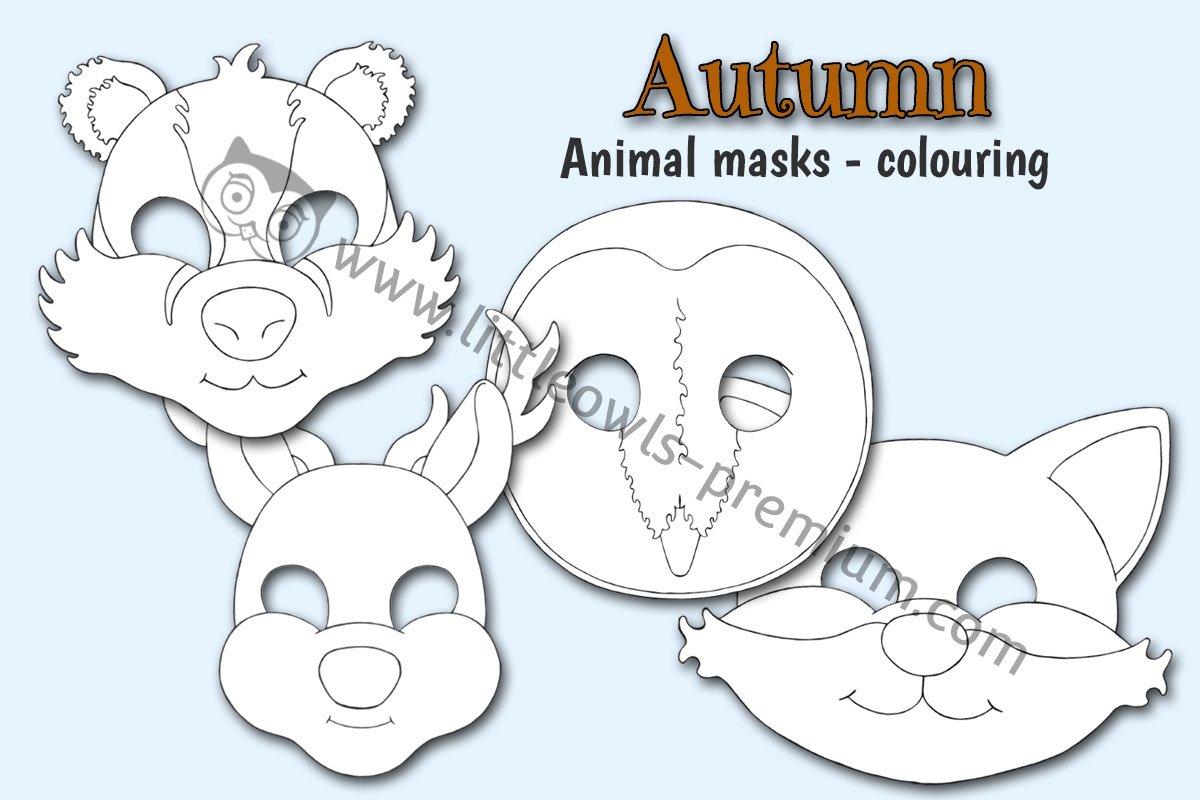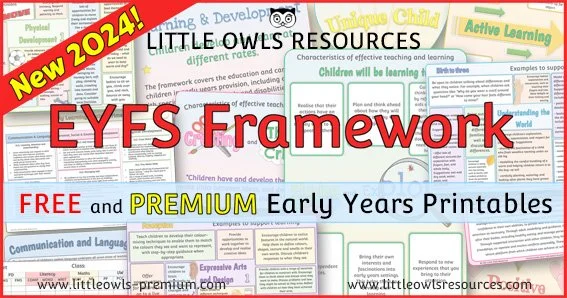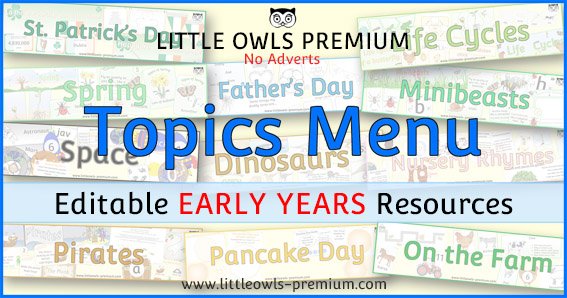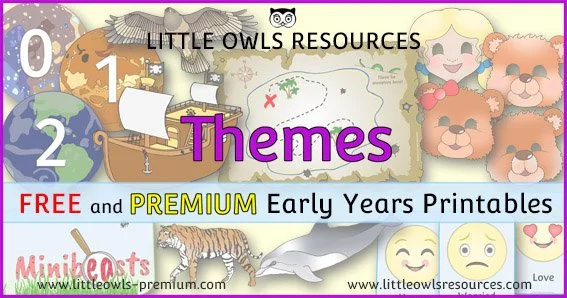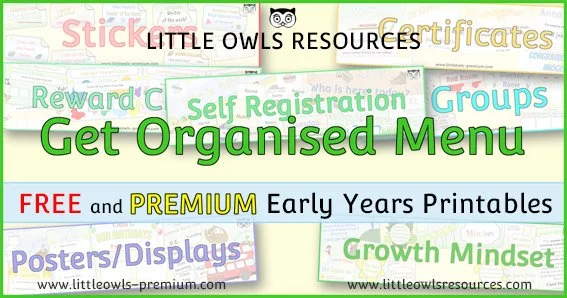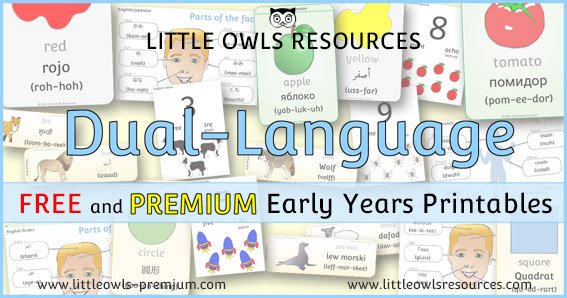Mindfulness: EYFS/Early Years activities, Displays and ideas
😌 Discover a world of calm and focus with our 'Mindfulness' resources! This page offers a brief overview of what mindfulness is, along with core resource packs to help you introduce this vital concept in your early years setting. You'll find a wealth of activities grouped by specific themes, including resources for identifying feelings, enhancing sensory awareness (sight, sound, smell, taste, touch plus interoception, proprioception and vestibular sensory systems), and fostering the ability to focus on a single thought/input/task. Spark moments of stillness with our engaging Mindfulness Activity Prompt Poster and accompanying Activity Cards. Encourage outdoor exploration and calm observation with Mindfulness Walks Posters and Mindfulness Walk Cards. Plus, set a peaceful tone in your space with our inviting Mindfulness Banners. Find everything you need to cultivate present moment awareness and emotional well-being! 🧘♀️
Please scroll down to browse our Mindfulness activity ideas, printable educational materials, planning inspiration, display resources, classroom & setting management tools and much more! If you’re looking for Preschool, Nursery, Childminder, Reception, SEND or Home Education resources for 0-7 year olds, you’ve come to the right place! Our interactive and engaging EYFS and KS1 learning resources are lovingly made (including original hand drawn images) by early years teaching and learning experts; a husband and wife team. We hope it helps! 😊
SECTIONS ON THIS PAGE:
Free Sample Resources
What is ‘Mindfulness’?
Core overarching ‘Mindfulness’ resource packs
Key ‘Mindfulness’ resources and activities grouped by a specific theme:
Identifying Feelings
Sensory awareness (sight, sound, smell, taste, touch)
Please note that a deeper awareness calls for the understanding of interoception, proprioception and vestibular sensory systems.
Focus on a single thought/input/task
Related pages/topics/themes
If you are not a member already, become a ‘Free Access’ member here. This will give you access to resources within the ‘Free Sample Resources’ sections at the top of most pages and ‘Special Dates Calendars’. Some whole topics are even free! Find out more about all of our membership options here. If you are already a member… thank-you! x
FREE SAMPLE RESOURCEs!
(Click on the images below to find out more.)
Please note that both Editable (docx file) and non-editable (pdf file) versions are available for all ‘Mindfulness’ resources. (Editable files require Microsoft Word to work at optimum level and Non-Editable files require a pdf viewer.)
Click on the thumbnail images below in the following sections for further details…
What is mindfulness?
Mindfulness practices aim to channel and focus the attention to a single task, thought or feeling. What could be described as the opposite of multi-tasking; training ourselves to sometimes take a step back, focus on one feeling/sense, thought or task, can have huge benefits. Meaningful mindfulness practices encourage heightened awareness, purposeful and sustained focus, compassion and the ability to become and maintain a state of calm. Mindfulness can help with anxiety and stress and aid connection with our surroundings, senses and emotions.
Mindfulness for young children is about allowing and encouraging them to pay attention to what is happening in the present moment; pausing to notice what is happening. It’s about focusing on a single thought, sensory input (sight, sound, smell, taste, touch) or emotion, becoming aware of it and accepting it. Mindfulness practice in the early years can help to develop self awareness and empathy and therefore gratitude and kindness.
In addition, mindfulness in the early years (and at any age) can help children (and adults) to recognise when they need to calm down and give them techniques to achieve this. If children are practicing mindfulness regularly, they are more likely to be able to call on techniques that work for them when they are feeling anxious, stressed, upset, agitated or angry.
Examples of a wide range of mindfulness activities can be found in the following packs:
(Scroll down this page to find more detailed specific activities)
Key ‘Mindfulness’ resources and activities grouped by a specific theme:
Identifying Feelings
In addition to being an important part of mindfulness, identifying feelings/emotions is a crucial part of the early years experience.
Mindfulness encourages us to take time to consider how we are feeling at a given moment and consider appropriate actions/reactions, consider how we can accept more negative emotions and move on from them.
Below is a small selection of our ‘Emotions and Feelings’ resources. For more, please visit our ‘Emotions and Feelings’ page.
Here we have highlighted just a few of our key emotion resources/activities which when used appropriately promote healthy mindfulness practice within early years. Premium members can click on the following resource images for a description of their use and download options.
Sensory awareness (sight, sound, smell, taste, touch)
Below are a few resources we have selected to help you and your child(ren) to ‘tune in’ to your senses.
Please note that a deeper awareness calls for the understanding of interoception, proprioception and vestibular sensory systems. The following poster outlines these for your knowledge. Not as easy to talk about with the children, but they can be touched upon and are important for practitioners/parents to have knowledge of especially when considering the experiences of neurodivergent children. You can access additional ‘Sensory Processing’ resources here.
Engaging the Senses in your Outdoor Area
We have created these prompt cards with the aim of promoting awareness of surroundings when in an outdoor play setting. The following activity prompts are intended to help children engage their senses to better notice and appreciate what they hear and see around them.
Sensory Walks
Choose a sense to ‘tune into’ on your walk. For example ‘ What can you hear?’ Take a moment on your walk to stop, stand still, close your eyes, and listen. What can you hear? Focus on that sound. Ideas for sensory walks can be found in our ‘Mindfulness Walk Cards’ pack and ‘Mindfulness Walks Poster’ prompt.
Sensory experiences
The following sensory stimuli are part of the early years experience. When children are allowed to ‘be in the moment’ when accessing these experiences it develops their mindfulness.
Children (and adults) can become free to use their senses to notice how something feels against their skin e.g. squeezing playdough or letting water glide through the gaps in their fingers, the details of how things look and smell and the sounds that are made.
The following pages may aid in these mindful experiences:
Scavenger Hunts
Scavenger hunts (especially when they engage all of the senses) can become a mindful experience. For example in our ‘Forest School Scavenger Hunt’ resources below children are encouraged to notice e.g. birds singing, something red, something small, something you can smell, etc.
More scavenger hunts can be found here. You may be especially interested in our ‘Beach School - Mindfulness Scavenger Hunt’ and our ‘Shapes - Descriptive Words Scavenger Hunt’.
Focus on a single thought/input/task
Within the following pages (buttons below), you will find many resources which will encourage mindfulness. To list them all here would be too unwieldy. We have therefore selected a few to list (directly below) and invite you to search for variations (e.g. the same activity with a different theme) using the page buttons (further below).
Breathing
Focus on your breathing. There are various ways this can be achieved with children. Here are a couple of techniques:
Teddy Breathing - Lie down with a teddy resting on your chest. Slowly breathe in and out. Concentrate on the teddy moving up and down.
Finger Tracing - Follow the line with your finger… breathe in… breathe out.
We have prompt cards for the above techniques within our ‘Mindfulness Activity Cards’ pack.
(You may also find these ‘Human Body - Breathing’ resources helpful to compliment your mindful activities.)
Brick Building
Enjoy using building blocks to build a model in a quiet place.
You may find the following packs useful for inspiration. Additional similar resources are available on our ‘Construction’ page.
Colouring
Colouring can be an incredible tool for engaging in mindfulness. It helps us all to pause and focus on a single creative pursuit. In doing so it can it can aid in the management of unhealthy thoughts and feelings and reduce stress and anxiety. In addition, it can help to deepen focus and improve attention.
Visit our ‘colouring’ page if you would like to browse the huge range of colouring activities we have available in various themes.
Display
Why not use one of our banners to start off your ‘Mindfulness’ display? Take photos of your mindfulness and display them to reflect and encourage additional activities. Perhaps you’d like to use our ‘Mindfulness - Activity Cards’ for inspiration and/or as part of your display?
Gardening
Many activities which care for plants can be done in a very mindful way. Planting seeds carefully and watering plants purposefully, considering each action you take and the resulting effect on the plant, can be a very mindful experience. It also promotes a connection with nature. You may find some useful resources to compliment your gardening experience on our ‘Gardening’ page.
Heartbeat
Feel your heartbeat in your chest and concentrate on the rhythm. This is one of the most straight forward ways to connect with your interoceptive sensory system. We have a prompt card for this within our ‘Mindfulness Activity Cards’ pack.
Find out more about interoception, proprioception and our vestibular sensory systems by accessing our ‘Sensory Systems Posters’ here.
(You may find these ‘Human Body - Circulatory/Blood System’ resources helpful to compliment your mindful activities.)
Jigsaw Puzzle
Complete a jigsaw puzzle in a quite space. Focussing on the detailed shapes and patterns in order to solve the problem (without distractions) will make this a calm, peaceful and mindful experience. We have puzzles of varying difficulty depending on the age and stage of your child(ren).
Browse our ‘Puzzles’ page to choose one that’s right for you and your child(ren).
In addition, to add an extra mindfulness step (or two), why not choose one of our puzzles which need colouring and cutting before hand. (Depending on your child) both the colouring and cutting processes can become focussed mindful experiences.
Matching and Ordering
Activities which focus on matching and ordering require us to look closely at similarities and differences. This kind of activity when carried out calmly and purposefully in a focussed way can be a powerful mindfulness experience. Children become fully engaged in the task and therefore the moment.
Browse our ‘Matching’ activities here and our ‘Ordering’ activities here.
Mindfulness Walk
Choose a theme for a walk. Focus on just that theme as you enjoy your walk. The following prompts will help give you some inspiration for a mindfulness focus.
Outdoor Activities
A few examples of outdoor activities you will find within these packs:
Blow bubbles - Watch where the wind takes them.
Cloud watching - Look up at the clouds. Watch as they slowly move and change.
Reading - Find a quiet spot outdoors such as under a tree or on a sandy beach. Look at a book independently or get immersed in a story being read to you.
Wildlife watching - Look closely. Can you see an animal? Perhaps a tiny minibeast? What is it doing? How is it moving? Watch quietly.
(More activities within the above packs.)
Role play - moving like something else
Allowing children to fully immerse themselves in moving like e.g. a leaf gently floating to the ground or a big heavy elephant, focusses a child’s body and mind on a single experience. A strong connection is made and movements become purposeful. By pretending to be something else children are beginning to develop the ability to see the world through different eyes, thus nurturing compassion and empathy.
For additional movement activity challenge cards please visit our ‘Expressive Movement’ page.
For further development of this activity, you may like to encourage children to create masks. Both the process of colouring a mask and cutting it out (depending on the age and stage of a child) can also be a mindful experience.
Browse our ‘Masks’ page here.
Pages you may like to browse to find additional similar resources:
